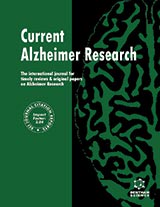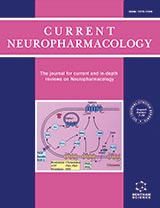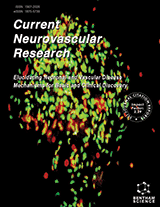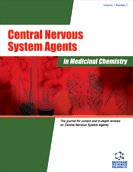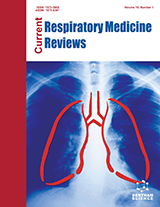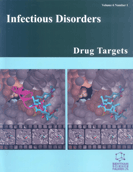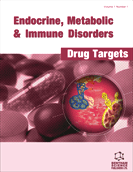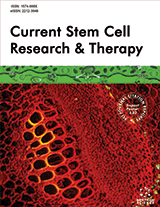摘要
背景:阿尔茨海默病(Alzheimer‘s disease,AD)的病理表现为神经元内神经原纤维缠结,由过度磷酸化的τ和细胞外积累的β淀粉样蛋白(aβ)组成。 方法:采用共聚焦显微镜、光镜、死后对照脑组织和AD患者的脑组织标本进行观察,以SOD 2抗体作为线粒体标记物和抗各种类型τ抗体,通过计算原始整合密度,分析τ阳性神经元线粒体密度和核降解情况。 结果:我们的研究结果显示AD细胞体、营养不良神经突起和神经丝中大量聚集的τ染色,而对照组织中染色较少,而τ阳性神经元的线粒体明显减少。AD的对照神经元或τ阴性神经元线粒体分布均匀,比对照神经元减少40%。对照组与对照组无显着性差异(P>0.05),τ神经元有明显的核降解,且随τ聚集程度的增加而呈进行性变化。聚集的τ浸润并似乎破坏了细胞核的包膜,越来越多的DNA从细胞核中流出,并与聚集的胞内τ结合。 结论:线粒体减少可能是由于蛋白质合成减少所致,而不是由于轴突转运减少而引起的线粒体再分布,提示线粒体减少和核降解是AD神经元丢失的关键机制。
关键词: 线粒体丢失,Sod 2,τ磷酸化,阿尔茨海默病,核降解,蛋白质合成减少
Current Alzheimer Research
Title:Tau Positive Neurons Show Marked Mitochondrial Loss and Nuclear Degradation in Alzheimer's Disease
Volume: 15 Issue: 10
关键词: 线粒体丢失,Sod 2,τ磷酸化,阿尔茨海默病,核降解,蛋白质合成减少
摘要: Background: Alzheimer's disease (AD) pathology consists of intraneuronal neurofibrillary tangles, made of hyperphosphorylated tau and extracellular accumulation of beta amyloid (Aβ) in Aβ plaques. There is an extensive debate as to which pathology initiates and is responsible for cellular loss in AD.
Methods: Using confocal and light microscopy, post mortem brains from control and AD cases, an antibody to SOD2 as a marker for mitochondria and an antibody to all forms of tau, we analyzed mitochondrial density in tau positive neurons along with nuclear degradation by calculating the raw integrative density.
Results: Our findings showed an extensive staining of aggregated tau in cell bodies, dystrophic neurites and neurofilaments in AD with minimal staining in control tissue, along with a marked decrease in mitochondria in tau positive (tau+) neurons. The control or tau negative (tau-) neurons in AD contained an even distribution of mitochondria, which was greatly diminished in tau+ neurons by 40%. There were no significant differences between control and tau- neurons in AD. Tau+ neurons showed marked nuclear degradation which appeared to progress with the extent of tau aggregation. The aggregated tau infiltrated and appeared to break the nuclear envelope with progressively more DNA exiting the nucleus and associating with the aggregated intracellular tau.
Conclusion: We report that the mitochondrial decrease is likely due to a decrease in the protein synthesis rather than a redistribution of mitochondria because of the decreased axonal transport. We suggest that the decrease in mitochondria and nuclear degradation are key mechanisms for the neuronal loss seen in AD.
Export Options
About this article
Cite this article as:
Tau Positive Neurons Show Marked Mitochondrial Loss and Nuclear Degradation in Alzheimer's Disease, Current Alzheimer Research 2018; 15 (10) . https://dx.doi.org/10.2174/1567205015666180613115644
| DOI https://dx.doi.org/10.2174/1567205015666180613115644 |
Print ISSN 1567-2050 |
| Publisher Name Bentham Science Publisher |
Online ISSN 1875-5828 |
 48
48 13
13
- Author Guidelines
- Bentham Author Support Services (BASS)
- Graphical Abstracts
- Fabricating and Stating False Information
- Research Misconduct
- Post Publication Discussions and Corrections
- Publishing Ethics and Rectitude
- Increase Visibility of Your Article
- Archiving Policies
- Peer Review Workflow
- Order Your Article Before Print
- Promote Your Article
- Manuscript Transfer Facility
- Editorial Policies
- Allegations from Whistleblowers
- Announcements
Related Articles
-
Cholinesterase Inhibitors and Beyond
Current Alzheimer Research Combined Effect of Parthenolide and Various Anti-cancer Drugs or Anticancer Candidate Substances on Malignant Cells in vitro and in vivo
Mini-Reviews in Medicinal Chemistry Management of Ovarian Cancer in Elderly
Reviews on Recent Clinical Trials Targeting the JNK Signaling Pathway for Stroke and Parkinsons Diseases Therapy
Current Drug Targets - CNS & Neurological Disorders Brain Excitatory/Inhibitory Circuits Cross-Talking with Chromogranin A During Hypertensive and Hibernating States
Current Medicinal Chemistry Pregnancy and Sleep Apnea
Current Respiratory Medicine Reviews The Role of Disproportionality Analysis of Pharmacovigilance Databases in Safety Regulatory Actions: a Systematic Review
Current Drug Safety The Challenges of Chemical Stability Testing of Herbal Extracts in Finished Products Using State-of-the-Art Analytical Methodologies
Current Pharmaceutical Analysis Withdrawal Notice: Pharmacological analysis of Cannabis sativa L.: A potent herbal plant
Mini-Reviews in Medicinal Chemistry Non-Analgesic Effects of Opioids: Interactions Between Opioids and Other Drugs
Current Pharmaceutical Design Molecular Mechanisms Underlying the Dedifferentiation Process of Isolated Hepatocytes and Their Cultures
Current Drug Metabolism Why are Antidepressant Drugs Effective Smoking Cessation Aids?
Current Neuropharmacology Vascular Stents in the Management of Intracranial Aneurysms
Recent Patents on Medical Imaging The Burgeoning Burden of Respiratory Syncytial Virus Among Children
Infectious Disorders - Drug Targets Serotonergic Modulation of Nociceptive Circuits in Spinal Cord Dorsal Horn
Current Neuropharmacology Cerebral Amyloid Angiopathy-related Intracerebral Hemorrhage Score For Predicting Outcome
Current Neurovascular Research Possibility that the Onset of Autism Spectrum Disorder is Induced by Failure of the Glutamine-Glutamate Cycle
Current Molecular Pharmacology Recent Advances in Structure and Function Studies on Human Bitter Taste Receptors
Current Protein & Peptide Science Early Life Events can Shape Aging and Longevity
Current Aging Science Amyloid Precursor Protein Knockout Diminishes Synaptic Vesicle Proteins at the Presynaptic Active Zone in Mouse Brain
Current Alzheimer Research


